angezeigt: 221 bis 230 von 388
388 Einträge wurden gefunden
Viel los im Bau...
13. March 2012 Franziskus Bautagebuch
In der zukünftigen Laundry (Wäscherei) ist jetzt der Steinfußboden mit Abfluss-Gulli und der Sockel für die Waschmaschinen und den Trockner gefliest. Auch im Krankenzimmer ist der Fußboden gelegt. Sonst sind die Elektriker voll im Gange, die Stromleitungen durch die vorhandenen Leerrohre zu ziehen. Für einen Laien ist der Kabelwirrwarr nicht durchschaubar…
Die Schreiner sind vorerst nach Hause gefahren, kommen aber wieder
Über Franziskus
Alle Blogbeiträge von Franziskus
Das Oratoriums-Dach ist gekrönt
8. March 2012 Franziskus Bautagebuch
Der Kunstschmied aus Nazareth war hier und hat mit vereinten Kräften und mit Bauingenieur Khalil und den Schreinern, die für die Verglasung der Öffnung auf dem Dach tätig sind, die Bekrönung auf das Dach gesetzt. Es ist eine sehr schöne Kunstschmiedearbeit. Das Größenverhältnis zum Dach stimmt auch. In einer eigenen Festlichen Aktion wird im Beisein der Architekten der Wetterfisch drauf gesteckt. Noch ruht er im Trockenem in unserm alten Kloster und ist stummer Zeuge von unserm Geschehen.
Im alten Kloster hatten wir in den letzten Wochen bei Regen im Haus 75% Luftfeuchtigkeit und etwa 13 Grad Raumtemperatur. Im Anbau auf der Ostseite des Klosters wurden auch heute auf das obere Stockwerk über dem Kapitelsaal die Außenmauern gegossen. Sonst sind Bodenverleger voll am Werk. Schön, wie alles jetzt zur Geltung kommt.
Über Franziskus
Alle Blogbeiträge von Franziskus
Das Ende naht
7. March 2012 Tobias Theologisches Studienjahr Jerusalem
Viel ist passiert in den letzten Wochen:
Wir fuhren auf Exkursion zu den Kreuzfahrerstätten und durften wieder ein paar Tage im paradiesischen Tabgha verbringen (s. Artikel von Florence).
Das letzte Wochenende war auf 4 Tage verlängert, sodass einige nach Jordanien aufbrachen, besonders in die faszinierende Felsenstadt Petra, die antike Hauptstadt der Nabatäer. Jedoch erschwerte der erste Schnee nach 6 Jahren die Unternehmung erheblich...
Gestern waren wir am und im Toten Meer: Erst auf Masada, wo Herodes hoch oben verrückterweise Paläste bauen ließ, dann in Ein Gedi, und zum Abschluss noch baden.
Heute mussten wir leider Miro, unseren Studienassistenten, verabschieden. Wir wünschen ihm alles Gute.
Nun sind es noch dreieinhalb Wochen Vorlesungszeit. Viel haben wir gelernt, das Land auch von oben bis unten befahren. Wir richten uns auf den Abschied ein, schmieden Pläne, wann und wo zu was wir uns wiedersehen und planen die ersten Tage in der Heimat...
Noch etwas Schönes zum Schluss: Erzabt Asterik von der ungarischen Abtei Pannonhalma, der im Moment in der Dormitio zu Gast ist, hat uns alle in seine Abtei eingeladen! :)
Über Tobias
Alle Blogbeiträge von Tobias
Eine neue Woche – mit Frühlingslicht!
7. March 2012 Franziskus Bautagebuch
Die neue Arbeitswoche ging schon mal gut an. Vom Klima her hatten wir heute den ersten warmen Frühlingstag!
Am vergangenem Freitag kam der zweite Container mit weiten Fenstern und Parkettböden. Im Oratorium setzten die Schreiner die zwölf bunten Glasfenster. Professor Johannes Schreiter sei an dieser Stelle ein herzlicher Dank gesagt für die Fertigung der Glasfenster. Die Fenster lassen dem Raum ein schönes Licht einfallen. Möge jeder von uns auch wie ein buntes Fenster sein, durch das die Liebe Gottes durchscheinen kann und den Mitmenschen aufleuchtet. In einer Zelle ist der Industrieparkettboden verlegt. Einfach wunderbar!
Über Franziskus
Alle Blogbeiträge von Franziskus
Es tut sich etwas
29. February 2012 Franziskus Bautagebuch
Heute regnet und stürmt es am See. Zum Glück haben wir ein dichtes Dach über dem neuen Kloster. Im Innern tat sich in den letzten Wochen viel: Der Kapitelsaal ist an der Ostseite angebaut, und die Außenwände sind bereits fast hochgezogen. Auf dem Dach des Südflügels und auf dem Oratoriums-Dach sind die Dachziegel. Im Kreuzgang ist teilweise der Steinboden verlegt, und die Arbeiter sind weiter daran am Werk.
Unter den verlegten Böden ist als Dämm- und Isolierungsmaterial „Foamglas“ gelegt. „Foamglas“ ist ein umweltfreundlicher Dämmstoff, aus über 60% Altglas hergestelltes Material, gilt als dauerhaft und hilft die Heiz- bzw. Kühltemperaturen im Sommer zu sparen.
Die Schreiner aus Trier setzen im oberen Stockwerk die Fenster und auch bereits die Türrahmen in den fertiggestellten Gängen. Einer der Schreiner hat begonnen, in einer Mönchszelle im Untergeschoss Industrieparkett aus Eiche zu verlegen.
Der Olivenbaum im Innenhof treibt weiter seine Zweige, ein Zeichen, dass er sich bereits eingelebt hat. Sonst erleben wir bereits den Frühling: Anemonen und wilder Raps und viel Grün kleiden die Hänge ringsum in Vielfalt. Somit von uns allen schöne Frühlingsgrüße aus Tabgha!
Über Franziskus
Alle Blogbeiträge von Franziskus
Vor fünf Jahren!
27. February 2012 Franziskus Bautagebuch
Heute am fünften Jahrestag der Grundsteinlegung (bzw. seiner Segnung) haben wir Brüder in der Eucharistiefeier in der Brotvermehrungskirche dem lieben Gott gedankt, dass es Dank des Deutschen Vereins vom Heiligen Lande und der vielen Wohltätern und Beter unter Ihnen, liebe Leserinnen und Leser, und durch die Architeckten und Bauarbeiter möglich wird, das neue Kloster bauen zu können!
Ich persönlich war von Mitte Dezember bis vor einer Woche in Hildesheim. Deshalb die "Funkstille". Gestern kam ich nach einer Woche aus unserer Abtei in Jerusalem zeitgleich mit den Schreinern der Firma Annen aus Trier hier an.
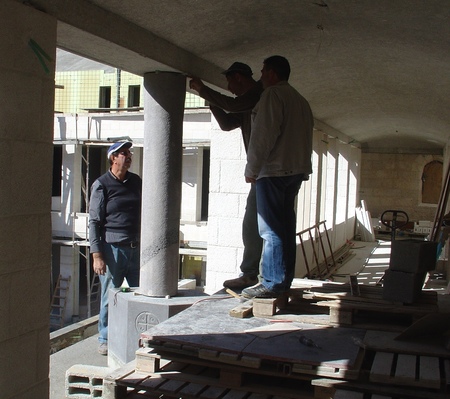 Vor zwei Wochen wurde der Grundstein gelegt und mit ihm eine wunderschöne Basaltsäule (11. Februar 2012).
Unser Grundstein hat nun seinen endgültigen Platz im Kreuzgang und ist gleich von der neuen Kirchentüre zum Kloster gut sichtbar. Auf ihm sitzt eine Basaltsäule, die auch das Dach der Nordseite des Kreuzganges mitträgt. Basaltgestein, hart gewordene Vulkanflüssigkeit, möge Symbol sein, dass Jesus Christus der Grundstein unsrer Gemeinschaft ist und uns trägt und erträgt. So mögen wir mit Ihm eins sein, wie Jesus selbst gebetet hat. Über den aktuellen Stand der Bauarbeiten demnächst mehr.
Vor zwei Wochen wurde der Grundstein gelegt und mit ihm eine wunderschöne Basaltsäule (11. Februar 2012).
Unser Grundstein hat nun seinen endgültigen Platz im Kreuzgang und ist gleich von der neuen Kirchentüre zum Kloster gut sichtbar. Auf ihm sitzt eine Basaltsäule, die auch das Dach der Nordseite des Kreuzganges mitträgt. Basaltgestein, hart gewordene Vulkanflüssigkeit, möge Symbol sein, dass Jesus Christus der Grundstein unsrer Gemeinschaft ist und uns trägt und erträgt. So mögen wir mit Ihm eins sein, wie Jesus selbst gebetet hat. Über den aktuellen Stand der Bauarbeiten demnächst mehr.
Über Franziskus
Alle Blogbeiträge von Franziskus
From Spring back to the Winter – from Tabgha back to Jerusalem
18. February 2012 Florence Theologisches Studienjahr Jerusalem
The third (and last) great exkursion in this year took us around Jerusalem and Northern Israel on the footsteps of the Crusaders.
We became slowly but steadily experts in architecture of the Crusaders’ time as we visited on monday the two ancient mosques of Ramla, the beautiful St. George’s Church in Lydda with the tomb of Saint George himself, the monastery of Latrun and Emmaus-Nikopolis. On Tuesday we left to the Galilee, starting in the Judean Desert with the beautiful mosaics of the Good Samaritan, continuing to the magnificent fortress of Belvoir near Tiberias and finally to the remains of the mysterious Church of the Anchor high above the Lake of Gennesaret.
After hearing the very tragical story of the Arab village of Bar’am and getting a little lost in the wide hills of the very north of the country, we went on to visit the Cliffs of Rosh HaNiqra near the border to Lebanon. One of the highlights of the whole journey certainly was the walking-tour to the castle of Montfort with its impressive scenery. The next day we visited the Jewish town of Safed / Zefat with its remarkable ancient synagoges, then the Druze sanctuary near Tiberias and finally the famous Horns of Hattin. There, in 1187, the final battle between the Crusaders and Salah ad-Din took place. We commemorated this event with a self-written play on the very battle field, which was actually very funny, but it really brought history to life. On the last day, we had to say goodbye to our beloved monastery in Tabgha and went to Acre, where we visited the Bahai gardens and then the beautiful medieval Old City with its ancient port and citadelle. In the end we were drenched with rain and sea spray, but this was a very worthy ending of a beautiful excursion.
What I personally enjoyed most during this exkursion was the incredible variety of landscapes. We started in the Judean Desert, a desolate countryside except for some Bedouine sherperds. Then, as we went towards the North along the Jordan Valley, the hills slowly became all covered with grass and flowers. The area around the Sea of Galilee looked like a mix between Ireland and some tropical paradise, as it has been raining a lot this winter, the country is bursting with fertility and joy. High up in the north, we found ourselves in an area belonging to the south of the Lebanon, a very open landscape where the hills are grown over with olive trees and other low trees and bushes, with rosemary and thyme, scattered Arab villages and desolated churches. In the medieval Acre, the storm coming from the Mediterranean almost knocked us over, the rain came down in sheets, and on our way southwards the coast presented itself as a small and fertile strip sandwiched between the Sea and the very close-by hills. And then: back home in Jerusalem, amidst the Judean Desert. This morning, after a stormy and rainy night with showers of sleet, there was on some spots even a little snow, but a couple of hours later, it was difficult to believe it had been there, as the sun had already made it all disappear...
Über Florence
Alle Blogbeiträge von Florence
Winter in Tabgha
3. February 2012 Peter Beit Noah
Just because I have not been making regular Blog posts does not mean that our corner of the Sea of Galilee is quiet. The winter months are the slow season for the Meeting Place, but the volunteers take the opportunity to become very busy with “General Cleaning.” Over these few weeks, we take apart windows, stoves, sinks and beds to scrub every inch of Tabgha. For someone who has trouble remembering to clean his own room, I can think of only one reason we were all able to remain cheerful and motivated throughout the process: we are all very excited about the groups coming back. Having worked with and been visited by so many wonderful groups throughout the Summer and Fall, we all knew how important this place is to them, and looking forward to seeing some of them again definitely made the hard cleaning much easier. There were also several other projects that we worked on throughout the months, including a complete makeover of the Dalmanutha area in front of the Sea, and (of course) making sure the lights are all working!
In these quieter months, many of the volunteers have taken the opportunity to go traveling. One of the top destinations for us is of course taking the opportunity to visit the organizations that so often visit us. We were able to spend two days driving throughout Palestine with Majida as she visited the families, volunteers, clinics and schools that she works with. The experience of seeing where our guests come from, and also seeing the people who help support them the entire year round, was an incredibly valuable and special experience for us. Equally valuable was another recent trip, this time not to an old friend and guest, but to a new school just beginning to look into the possibility of spending some time with us in Tabgha! We really hope that the opportunity will work for them, so that they will be able to appreciate this wonderful place, and we will be able to make some new friends.
Über Peter
Alle Blogbeiträge von Peter
Muslimische Wochen
18. January 2012 Tobias Theologisches Studienjahr Jerusalem
Der Studienalltag hat uns wieder fest im Griff. Nach dem Wintersemester mit seinen vielen Exkursionen steht uns jetzt ein Semester mit mehr Vorlesungen bevor.
Es begann sehr spannend: Ein Professor für Islamwissenschaften, einer für katholische Dogmatik und acht muslimische Doktoranden kamen für eine christlich-muslimische Werkwoche zum Thema Eschatologie aus Deutschland. Wir zeigten ihnen Jerusalem, sie uns den Tempelberg, auf dem wir sogar in die Al-Aqsa-Moschee und den Felsendom hinein durften! Die Diskussionen zwischen Studenten aber auch zwischen den Professoren waren sehr ertragreich, Gemeinsames und Unterscheidendes wurde herausgestellt. Wir unternahmen mit ihnen auch eine Zwei-Tages-Exkursion in den Negev; in der beeindruckenden Landschaft standen Archäologie, Kibbuz kennenlernen und Wüstenerfahrungen auf dem Programm.
Dann folgte ein Studientag zum orthodoxen Judentum: Besuche in der ultraorthodoxen Jeshiva nebenan, in einer für Frauen und in einem mehr wissenschaftlich ausgerichteten Institut gewährten uns Einblicke in diese Strömung.
Nun führt Frau Prof. Neuwirth uns kompetent und zielsicher in den Koran als Text der Spätantike ein.
Über Tobias
Alle Blogbeiträge von Tobias
Christmas
12. January 2012 Florence Theologisches Studienjahr Jerusalem
With the beginning of the Studienjahr's second term in Jerusalem, I'm very happy to get started on the English blog, finally.
The first term had already been a very intense time, I must say, and it was concluded in a similar way by the celebration of Christmas. Actually, some of the students and I celebrated the birth of Our Lord twice - once according to the "normal" calendar, on the 25th of December, and once according to the orthodox churches' calendar, in the night from 6th to 7th January. Those among my readers who are familiar with the Dormition Abbey know that their liturgy is certainly one of the most beautiful in the world. But for sure I'm not exaggerating in saying that the beauty and dignity of the Christmas Mass really made me feel like if Heaven had come down to earth for a few hours.
The same procedure as every year, the monks' walk to Bethlehem, was prevented this year by heavy showers which did not seem willing to come to an end in that night. While the monks, some students and guests took the car, a group of students was venturous enough to walk. We arrived in Bethlehem totally soaked through, but it was worth it! To be on the very place of the birth of Jesus, in the very holy night of Christmas - this was a touching experience, in spite of the wetness and the cold.
Two weeks later, on the 6th of January, again there was a group of students starting their walk from Dormition Abbey to Bethlehem. This night was, in every sense, the very opposite of the Christmas night in December, not only because it was not raining (thanks God). The place in front of the Church of the Nativity was crowded with people, all of them trying madly to get inside the Church, but being prevented from it by quite a number of policemen. When they finally let us pass and enter the Church, we faced a completely different kind of atmosphere than in December, where there had been hardly any pilgrims. Now the basilica was crammed with people, and you surely did not feel like inside a church at all. It is difficult to describe it. People were walking, standing, sitting on the floor, talking, sleeping, waiting, trying to catch a glimpse of what was going on near the iconostasis, the lanterns hanging from the ceiling were scintillating all through the church, and there was a continuous low chant filling the air.
The variety of pilgrims was incredible, just like the fact that there were actually three different liturgies celebrated at the same time. The main one was the Greek orthodox, followed by Arabs, Russians, Greeks, Ethiopians and some more Europeans. On the left hand of the iconostasis, the Syrian orthodox had their own liturgy, and even more on the left side there was the Coptic orthodox Church. I joined the latter for the liturgy, even though it was all in Arabic and Coptic, but it really was a great experience to hear these three groups singing against each other and yet somehow together, to see the clergy's rich and beautiful vestments, to observe the various liturgical processions, to smell this mixture of incense, candles, humans and sleepiness.
It was surely not what you would call a devout atmosphere favourable to silent prayer, but yet it was a most intense spitirual experience with all these overwhelming sensations and this incredible joy on the faithfuls' faces caused by the miracle of the Birth we'd been celebrating that night. It was unique, really, and I'm very grateful that I could witness this great example of oriental and orthodox piety!
Über Florence
Alle Blogbeiträge von Florence
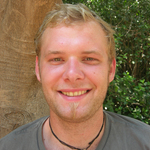 Paul
Paul
Paul Nordhausen-Besalel ist schon etwas in der Welt herumgekommen, bis er nach seinem Pädagogikstudium in Israel landete. Aber er hat sich die Begeisterung eines Kindes bewahrt, wenn er seiner Arbeit und den Menschen, denen er dabei begegnet, entgegentritt. Als Leiter der Begegnungsstätte Beit Noah muss er das auch. – Von einem der schönsten Jobs rund um den See Genezareth berichtet er im Beit Noah-Blog.
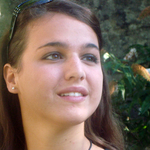 Nina.
Nina.
Nun stehen unsere Füße in deinen Toren, Jerusalem. (Psalm 122,2)
Acht Monate in Jerusalem leben und lernen: Dieser Traum wurde für Nina aus dem Schwabenland wahr.
Sie stammt aus einer württembergischen Kleinstadt bei Esslingen am Neckar. Auch für das Studium der Theologie verschlug es sie an den Neckar, diesmal direkt ans Ufer, nämlich nach Tübingen. Nach vier Semestern dort ist sie nun in Jerusalem, der Heiligen Stadt für Juden, Christen und Muslime.
In dieser Stadt, in der es nichts gibt, was es nicht gibt, macht sie jeden Tag aufs Neue faszinierende wie irritierende Erfahrungen, von denen sie im Studiblog berichtet.
Von pinkfarbenem Blumenkohl, eingelegten Oliven in Plastikeimern, Rolexverkäufern und sonstigen Erlebnissen und Begegnungen im Heiligen Land erzählt sie humorvoll auf ihrem privaten Blog „Nina im Heiligen Land” .
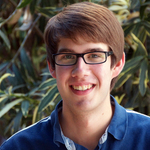 Lukas (STJ 2012/13)
Lukas (STJ 2012/13)
Lukas Wiesenhütter liebt Humus, Falafel und den Gang durch die Gassen der Jerusalemer Altstadt. Nach sechs Semestern in Freiburg im Breisgau studiert er während der kommenden Monate Theologie an der Dormitio-Abtei. Nebenbei schreibt der 23-Jährige am Blog des Studienjahres mit.
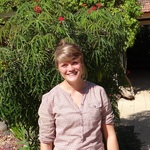 Caroline
Caroline
Caroline ist eine der vier DVHL-Volos, die 2013/14 in Tabgha ihren Dienst machen. Von ihrer Arbeit und ihrem Leben am See berichtet sie in diesem Blog.
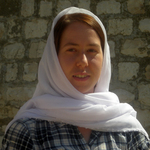 Florence Berg.
Florence Berg.
Florence was raised in Luxembourg, but returned to her native country Germany to take up theological studies in the lovely town of Tübingen, where she soon added a degree in Near Eastern Archeology, simply out of curiosity.
Although in Jerusalem and the entire Holy Land it's very hard NOT to stumble across some archeological remains (and so much more not yet discovered!), she'll also have a close look at living humans.
Greek-catholic nuns and French Dominican friars, Muslims and religious Jews, Christian Palestinians and German fellow students - it's quite unique, so enjoy Florence's reports, impressions and anecdotes!
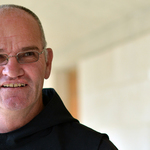 Bruder Franziskus
Bruder Franziskus
Wer Bruder Franziskus einmal in Tabgha erlebt hat, der hat den Eindruck, dass er schon immer da ist: Die Verbundenheit mit diesem sehr besonderen Teil der Schöpfung, die Offenheit für die Menschen und besonders die Nähe zu Jesus, der diesen schönen Ort am See mit den Menschen geteilt hat, machen aus Bruder Franziskus einen echten Tabgha-Mönch.
Auch den Neubau und die Menschen um ihn herum hat er im Blick. Im Bautagebuch erzählt er davon.
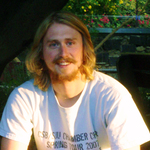 Tony
Tony
Tony (Anthony) Nelson ist von Hause aus Philosoph, d.h. von seinem ersten Studienabschluss her. Den hat er an der St. John's University in Collegeville (Minnesota/USA) gemacht. Das ist bestimmt nicht die schlechteste Voraussetzung für den zweitschönsten Job am See Genezareth: Assistent des Leiters der Begegnungsstätte Beit Noah. Tony, der im Rahmen des Benedictine Volunteer Corps bei uns in Tabgha ist, erzählt von seiner Arbeit im Beit Noah-Blog.
 Annika (STJ (2012/13)
Annika (STJ (2012/13)
Annika Schmitz hat ihr Theologiestudium vor sieben Semestern als überzeugte Kölnerin in Freiburg im Breisgau begonnen. Sie hat also einige Erfahrung damit, sich auf fremde Kulturen einzulassen.
Bis Mitte April lebt, studiert und bloggt die 23-Jährige aus Jerusalem.
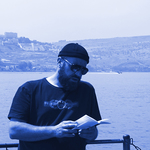 p basilius
p basilius
„Willst du von der Welt was seh’n, musst du in ein Kloster geh’n!“ – Im Gemeinschaftsleben im Kloster mit den Brüdern, mit Gästen, Studierenden und Volontären kann man in der Tat viel von der Welt sehen und erfahren. Und mindestens die halbe Welt kommt nach Jerusalem und Tabgha, weil es sich einfach lohnt... – Aus diesen Welten im und ums Kloster erzählt Pater Basilius, der Prior unserer Teilgemeinschaft in Tabgha.
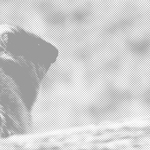
Mit einer Unterbrechung von etwa eineinhalb Jahren, in denen er im „Haus Jerusalem” lebte, ist Pater Jeremias schon seit über zehn Jahren in Tabgha.
Den Entstehungsprozess des neuen Klosters hat er intensiv miterlebt und geprägt: Bei der Erstellung des Masterplanes, einer Art Bebauungs- und Flächennutzungsplans, in unzähligen Gesprächen mit den Brüdern, den Architekten und den Vertretern des DVHL und in der Begegnung um im Kontakt mit Spendern, die dieses Projekt in so wunderbarer Weise ermöglichen.
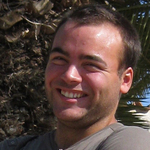 Peter Blattner
Peter Blattner
Peter Blattner gehört zur vierten Generation amerikanischer Volontäre, die uns die Benediktinerhochschule St. John's/Collegeville in Minnesota schickt. Wie auch seine Vorgänger verstärkt er das Beit Noah-Team um Leiter Paul Nordhausen Besalel.
Im Beit Noah-Blog berichtet er, was er auf der und um die Begegnungsstätte so alles erlebt!
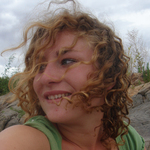 Nancy Rahn.
Nancy Rahn.
Nancy ist Weltenbummlerin und beobachtet gerne Menschen. Dafür ist sie in Jerusalem genau an der richtigen Adresse.
Ursprünglich studiert Nancy im kleinen Tübingen und genießt deshalb den Trubel und das Getümmel in den kleinen und großen Straßen ihrer neuen Heimat auf Zeit.
Von eindrücklichen Erfahrungen, witzigen und nachdenklichen Begegnungen und davon was es heißt, mit einem Haufen ganz unterschiedlicher Menschen zusammen ein dreiviertel Jahr lang das Land der Bibel kennenzulernen, berichtet sie im Studi-Blog.
Weitere Beobachtungen teilt Nancy auf ihrem privaten Blog Nancy auf dem Zion.
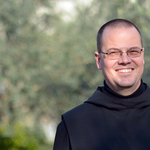 Pater Ralph
Pater Ralph
Spötter behaupten, eine der wichtigsten Beschäftigungen der Benediktinermönche sei es zu bauen. – Das ist genauso böse wie richtig. Denn der Bau eines neuen Klosters in Tabgha ist für unsere Gemeinschaft dort ausgesprochen wichtig, um an diesem beliebten und belebten Pilgerort einen sicheren und geschützten Lebensraum als Mönche zu haben. – Pater Prior Ralphs Tagewerk richtet sich nach den Baumaschinen und Handwerkern, wovon er im „Bautagebuch“ berichtet.
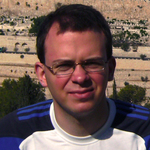 Tobias Weyler.
Tobias Weyler.
Tobias ist gebürtiger Düsseldorfer und Kölner Erzbistumskind. Deshalb lag es nahe, dass er sein Theologiestudium vor zwei Jahren in Bonn begann.
Jerusalem und Israel reizen ihn politisch, sprachlich, kulturell, wissenschaftlich und natürlich religiös. Über seine Erfahrungen und Eindrücke berichtet er hier zusammen mit Nina und Nancy.
Außerdem bloggt Tobias auch unter yerushalayimshelzahav.over-blog.de!
 Carolin.
Carolin.
Mein Name ist Carolin Willimsky. Ich bin dieses Jahr (2012/13) Volontärin in Tabgha, dabei werde möglichst regelmäßig diesen Blog schreiben.
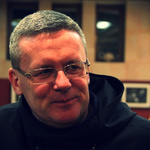 Abbot Gregory
Abbot Gregory
Born and grown up in Belfast Abbot Gregory made, of course, very specific experiences with people of different religions or denominations. It is not only a question of peace or violence, even more it is a process of learning together.
As an Irish monk of a German monastery in the holy city of Jerusalem Abbot Gregory will share his impressions of ever day’s life here in Jerusalem between all those people of various languages, cultures and religions – not always easy people, but interesting people.
















